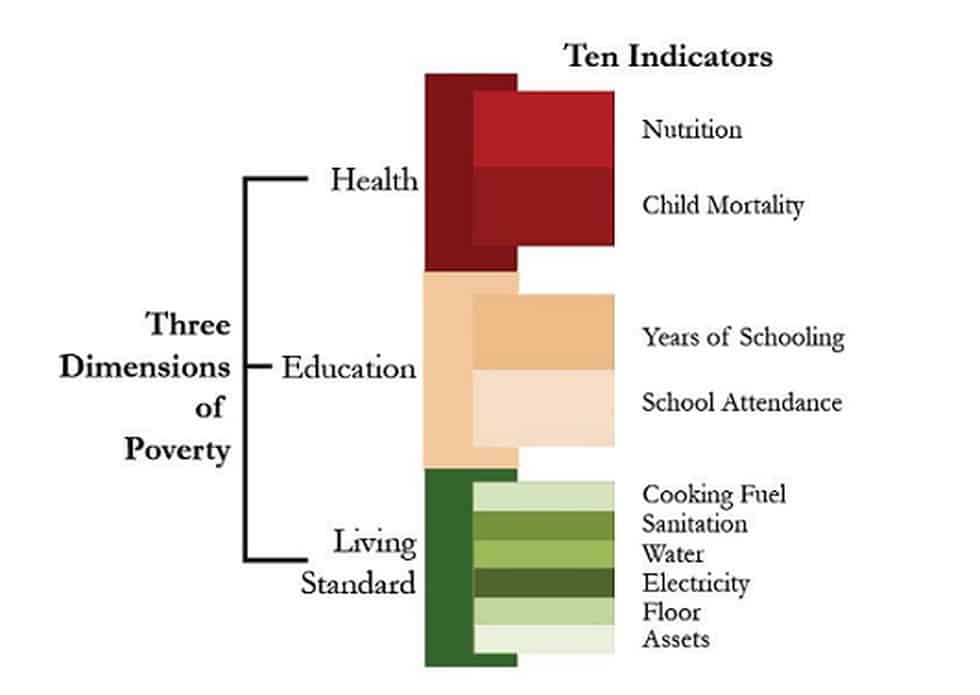Key Findings:
- It said that 25 countries, including India, successfully halved their global MPI values within 15 years, showing that rapid progress is attainable.
- The report noted that deprivation in all indicators declined in India.
- The poorest States and groups, including children and people in disadvantaged caste groups, had the fastest absolute progress.
- In India those people who are multidimensionally poor and deprived under the nutrition indicator have declined.
- Children under the age of 18 account for half of MPI-poor people (566 million).
- The poverty rate among children is 27.7%, while among adults, it is 13.4%.
- Countries halved their MPI in periods as short as four to 12 years.
Key facts about Global Multidimensional Poverty Index
- It was developed by the United Nations Development Programme (UNDP) and the Oxford Poverty and Human Development Initiative (OPHI).
- It was first launched in 2010.
- It constructs a deprivation profile of each household and person through 10 indicators spanning health, education and standard of living and includes both incidence as well as intensity of poverty.
Q1) What is the role of the United Nations Development Programme?
UNDP works to eradicate poverty and reduce inequalities through the sustainable development of nations, in more than 170 countries and territories.
Source: 415 million Indians came out of multidimensional poverty in 15 years, says UNDP study
Last updated on November, 2025
→ Check out the latest UPSC Syllabus 2026 here.
→ Join Vajiram & Ravi’s Interview Guidance Programme for expert help to crack your final UPSC stage.
→ UPSC Mains Result 2025 is now out.
→ UPSC Notification 2026 is scheduled to be released on January 14, 2026.
→ UPSC Calendar 2026 is released on 15th May, 2025.
→ The UPSC Vacancy 2025 were released 1129, out of which 979 were for UPSC CSE and remaining 150 are for UPSC IFoS.
→ UPSC Prelims 2026 will be conducted on 24th May, 2026 & UPSC Mains 2026 will be conducted on 21st August 2026.
→ The UPSC Selection Process is of 3 stages-Prelims, Mains and Interview.
→ UPSC Result 2024 is released with latest UPSC Marksheet 2024. Check Now!
→ UPSC Prelims Result 2025 is out now for the CSE held on 25 May 2025.
→ UPSC Toppers List 2024 is released now. Shakti Dubey is UPSC AIR 1 2024 Topper.
→ UPSC Prelims Question Paper 2025 and Unofficial Prelims Answer Key 2025 are available now.
→ UPSC Mains Question Paper 2025 is out for Essay, GS 1, 2, 3 & GS 4.
→ UPSC Mains Indian Language Question Paper 2025 is now out.
→ UPSC Mains Optional Question Paper 2025 is now out.
→ Also check Best IAS Coaching in Delhi

















